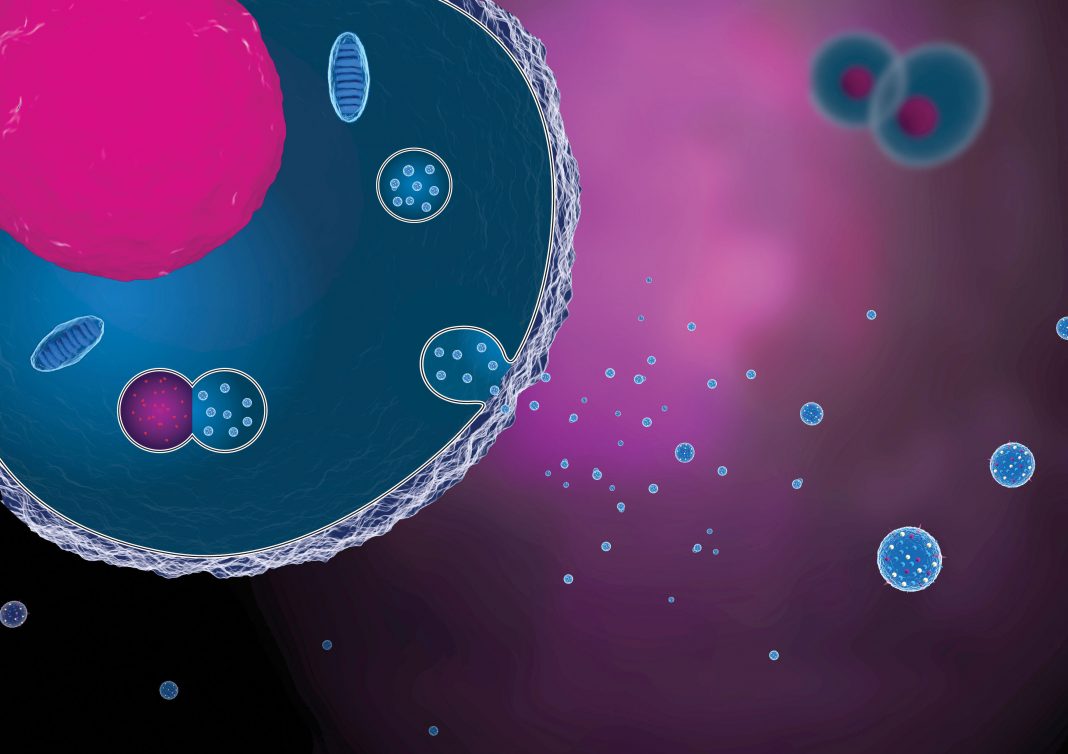Delivery of therapeutic proteins or other intracellular materials has been a long-standing challenge for translational medical researchers. Effective strategies can present a powerful tool for many treatment strategies including CRISPR or small molecule delivery.
In a new study, Jihoon Han, PhD, a researcher at Sungkyunkwan University, South Korea, and his colleagues utilized the cells’ exosomes to overcome this protein delivery challenge. Their work titled, “Engineered exosomes with a photoinducible protein delivery system enable CRISPR/Cas-based epigenome editing in Alzheimer’s disease,” was published in Science Translational Medicine.
“We engineered exosomes equipped with a photoinducible cargo protein release system, termed mMaple3 mediated protein loading into and release from exosome (MAPLEX),” wrote the authors. The team fused cargo proteins with mMaple3, a photocleavable protein bound to exosomal membrane markers. Cleavage of mMaple3 can be induced with blue light, thus releasing the cargo from the exosome.
The authors wrote that their “results suggest that MAPLEX is an efficient intracellular protein delivery system that can deliver diverse therapeutic proteins for multiple diseases” including genetic disorders, cancers, and other diseases requiring therapeutic protein delivery.
The present study is a proof-of-concept exploring multiple downstream applications for MAPLEX. First, the researchers induced in vitro transcriptional regulation by delivering specific transcription factors—octamer-binding transcription factor 4 and SRY-box transcription factor 2—to fibroblasts. They continued with in vivo testing by successfully delivering Cre recombinase and inducing gene recombination in Cre reporter mice.
Finally, the team utilized two Alzheimer’s disease mouse models—5xFAD and 3xTg-AD—to test the effectiveness of MAPLEX in reducing symptoms of Alzheimer’s disease. The team delivered MAPLEXs containing a ribonucleoprotein complex, which epigenetically edited the Bace1 promotor, reducing Bace1 expression. This led to a reduction of amyloid-β protein and improved cognition and memory in the mice.

“The development of more sophisticated and selective targeting systems is the next step to improve the clinical potential of the MAPLEX system, which may open new avenues for genetic therapeutics,” the authors concluded.


